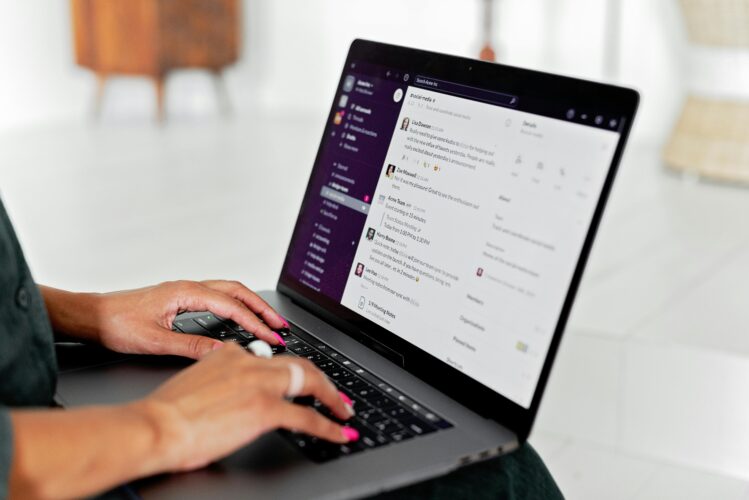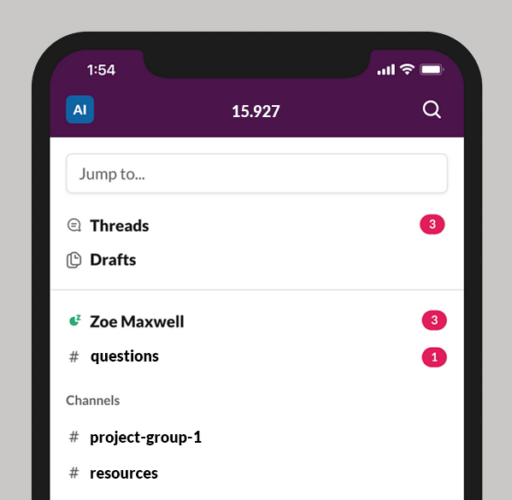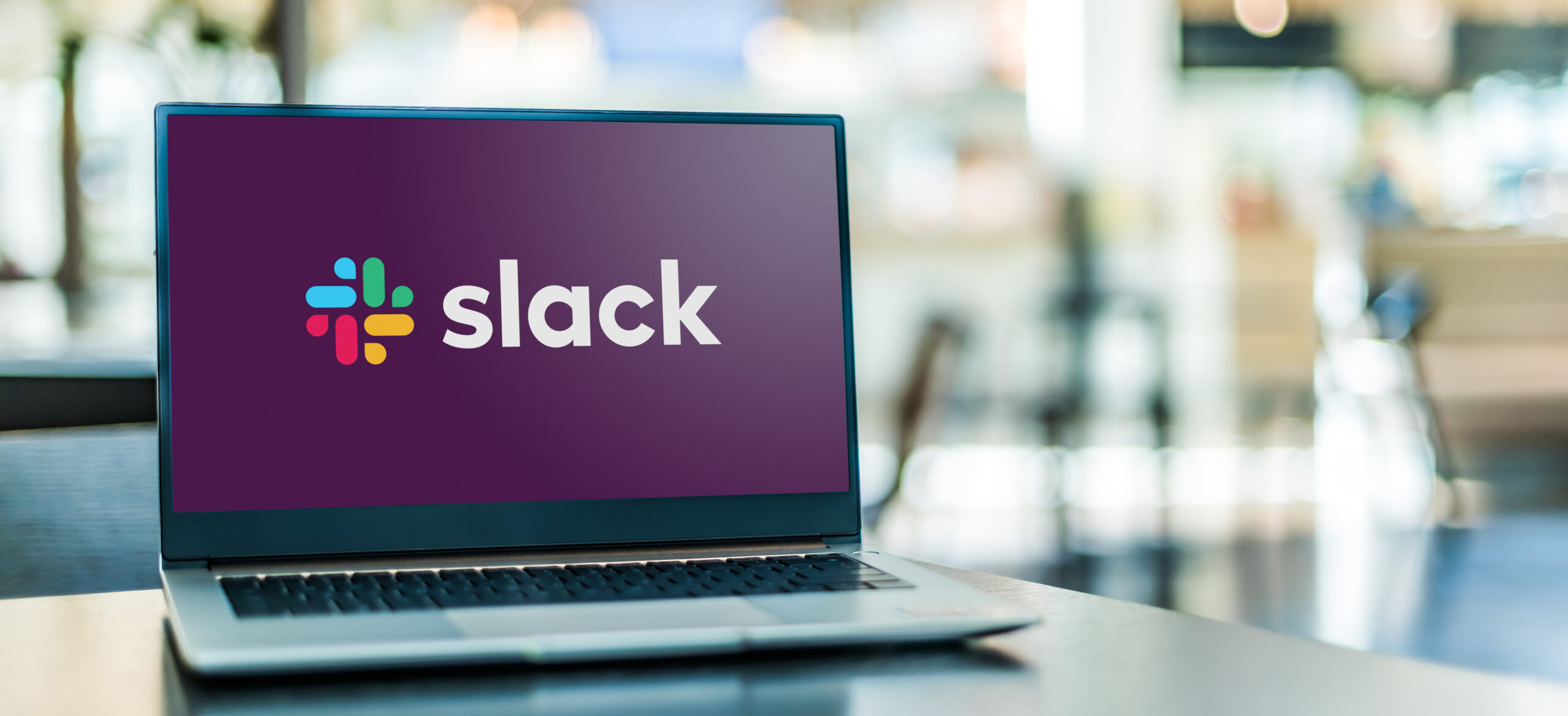By integrating Slack into your courses, you can create a digital hub that extends student collaboration and engagement beyond the physical walls of your classroom.
Slack offers a new way for educators to engage students and create connected learning communities. Research shows that Slack facilitates in-class communication through “backchanneling,” where students can ask questions, make comments, and share resources in real-time during lectures (Carpenter, 2015; Stanford Graduate School of Education, 2021). This inclusive approach provides alternative participation avenues for students who may be hesitant to speak up in front of the whole class, accommodating diverse needs and preferences (Carpenter, 2015). With real-time messaging, integrations, multimedia capabilities, and built-in collaboration features, Slack complements Canvas by providing a flexible space where students can interact, share knowledge, work together, and drive their own learning journeys.
Real-Time Communication
 One of Slack’s biggest advantages is enabling in-the-moment interactions. Students and instructors can exchange questions, feedback, resources, and reactions rapidly in Slack. Slack’s threaded messaging feature allows conversations to be organized by topics, enabling instructors and TAs to track questions and responses (Stanford Graduate School of Education, 2021). When used for real-time conversation during class, also known as backchanneling, Slack can make classes more interactive and inclusive (Carpenter, 2015; Garg & Dougherty, 2022). Instructors can also leverage Slack’s real-time communication capabilities for things like virtual office hours, study groups, and informal discussions (MIT Open Learning, 2021). Slack’s search functionality also lets users find and share knowledge across channels and messages. Slack’s mobile app allows questions to be asked in and out of the classroom setting.
One of Slack’s biggest advantages is enabling in-the-moment interactions. Students and instructors can exchange questions, feedback, resources, and reactions rapidly in Slack. Slack’s threaded messaging feature allows conversations to be organized by topics, enabling instructors and TAs to track questions and responses (Stanford Graduate School of Education, 2021). When used for real-time conversation during class, also known as backchanneling, Slack can make classes more interactive and inclusive (Carpenter, 2015; Garg & Dougherty, 2022). Instructors can also leverage Slack’s real-time communication capabilities for things like virtual office hours, study groups, and informal discussions (MIT Open Learning, 2021). Slack’s search functionality also lets users find and share knowledge across channels and messages. Slack’s mobile app allows questions to be asked in and out of the classroom setting.
Multimedia Capabilities
With support for diverse formats like images, GIFs, emojis, videos, and more, Slack can inspire students to both consume and generate creative content (Sabin & Olive, 2018). Instructors can use Slack to share engaging multimedia materials that reinforce course topics. In the meantime, students can ask questions and explore ideas in creative ways using images, videos, GIFs and more. Integrations like YouTube even allow embedding rich media directly into conversations.
Collaborative Learning
 Slack facilitates collaborative learning through dedicated channels for team projects, study groups, and peer support. Private channels provide spaces for students to collaborate on group projects and assignments (MIT Open Learning, 2021; Stanford Graduate School of Education, 2021). Features like threads and reactions enable structured discussions and feedback. Research shows Slack’s positive impact on student learning outcomes through increased engagement and community building (Garg & Dougherty, 2022; Ross, 2019). This sense of community enhances the overall learning experience.
Slack facilitates collaborative learning through dedicated channels for team projects, study groups, and peer support. Private channels provide spaces for students to collaborate on group projects and assignments (MIT Open Learning, 2021; Stanford Graduate School of Education, 2021). Features like threads and reactions enable structured discussions and feedback. Research shows Slack’s positive impact on student learning outcomes through increased engagement and community building (Garg & Dougherty, 2022; Ross, 2019). This sense of community enhances the overall learning experience.
Analytics for Better Insights
Usage analytics for Slack workspaces provide valuable data on student engagement (MIT Open Learning, 2021). Instructors can review participation trends and metrics to identify areas working well versus needing improvement. These insights enable data-driven iterations and adjustments to teaching approaches using Slack.
Streamlined Workflows
Slack enhances behind-the-scenes communication and coordination for teaching teams. Channels bring faculty, course admins, and teaching assistants into one space for collaboration (MIT Open Learning, 2021). Integrations with tools like Zoom and Canvas also connect workflows. This level of coordination leads to more streamlined course administration and student support. One example is allowing faculty and TAs to offer office hours via Slack for quick questions that don’t require asynchronous communication.
Increased Student Satisfaction
By providing an interface that students are already familiar with from social media, Slack increases student satisfaction (Ross, 2019; Sabin & Olive, 2018). Slack also facilitates peer learning through channels for collaboration and community building. These factors lead to greater student motivation and engagement.
Key Takeaways
Slack provides an optimal platform for active learning in the digital era. With its multimedia engagement capabilities, knowledge sharing features, and strong community building, Slack can unlock more enriching, student-centered teaching and learning experiences across educational contexts. The specific benefits highlighted enable more active, student-driven learning through enhanced communication, collaboration, and overall learning experience.
Have you used Slack in your course? Share your Slack success stories with us. Together, we can showcase the power of Slack for teaching and learning at MIT Sloan.
References
Carpenter, J. (2015). Digital backchannels: Giving every student a voice. ASCD. https://www.ascd.org/el/articles/digital-backchannels-giving-every-student-a-voice
Garg, N., & Dougherty. (2022). Education surges when students learn together. Inside Higher Ed. https://www.insidehighered.com/advice/2022/05/25/how-build-classroom-community-increase-student-learning-opinion
MIT Open Learning. (2021, December 1). Slack in education and conversation with colleagues [Video]. YouTube. https://www.youtube.com/watch?v=TgKNmWhvDw0
Ross, S. M. (2019). Slack it to me: Complementing LMS with student-centric communications for the millennial/post-millennial student. Journal of Marketing Education, 41(2), 91–108. https://doi.org/10.1177/0273475319833113
Sabin, J., & Olive, A. (2018). Slack: Adopting social-networking platforms for active learning. PS: Political Science & Politics, 51(1), 183-189. https://doi.org/10.1017/S1049096517001913
Stanford Graduate School of Education. (2021, May 19). Slack as a teaching tool. IT Teaching Resources. https://teachingresources.stanford.edu/resources/slack-as-a-teaching-tool/











